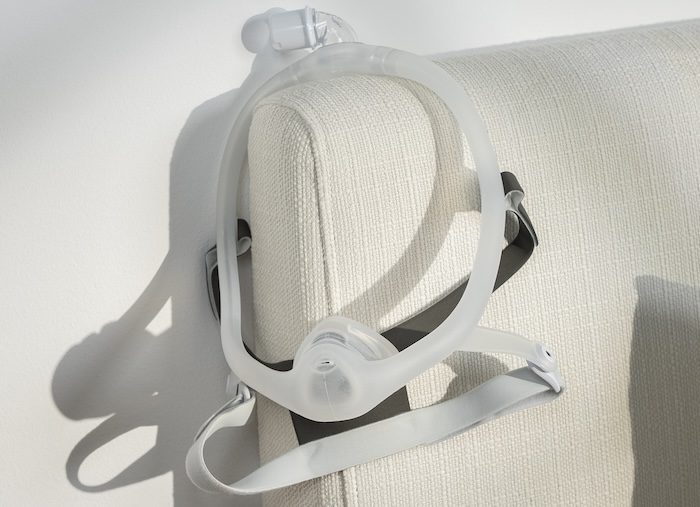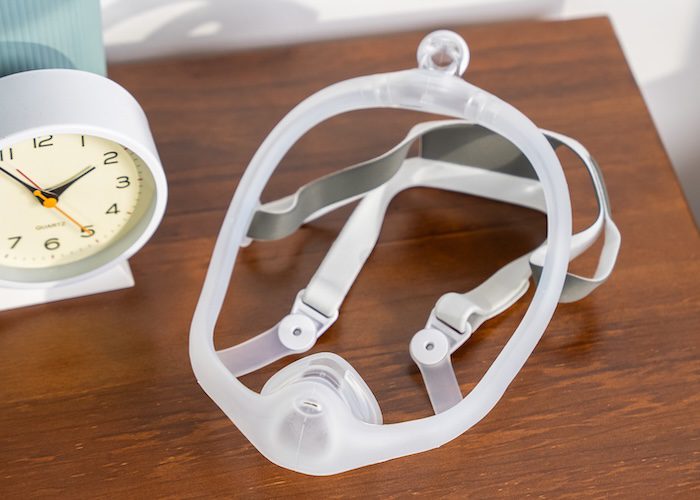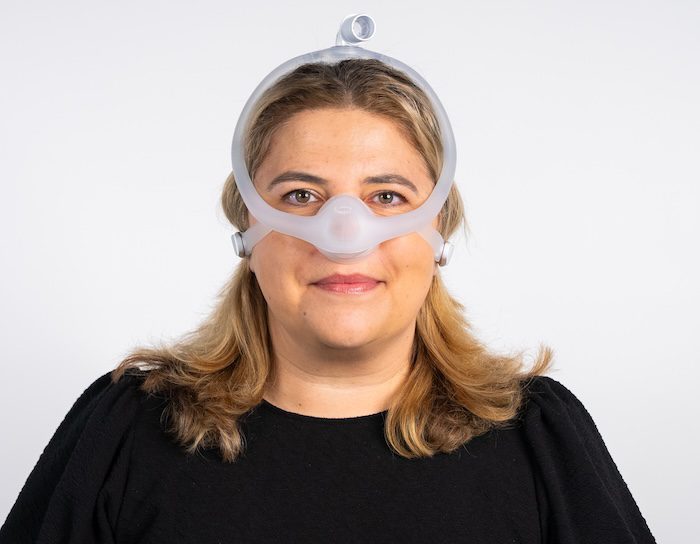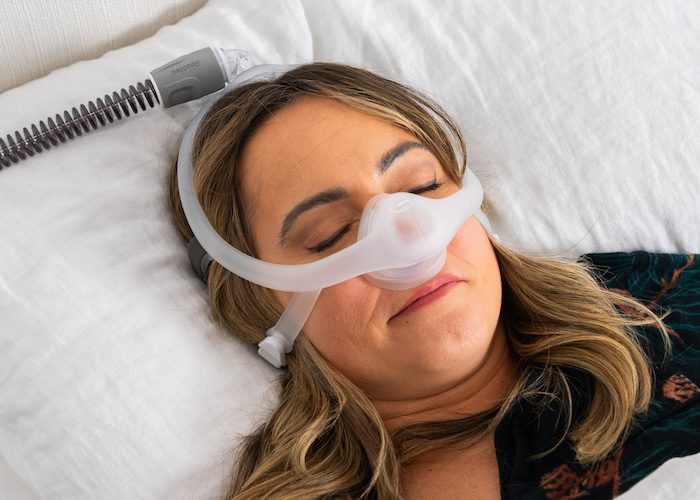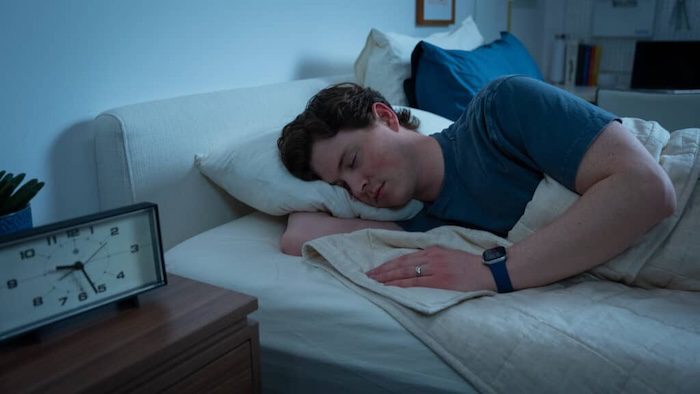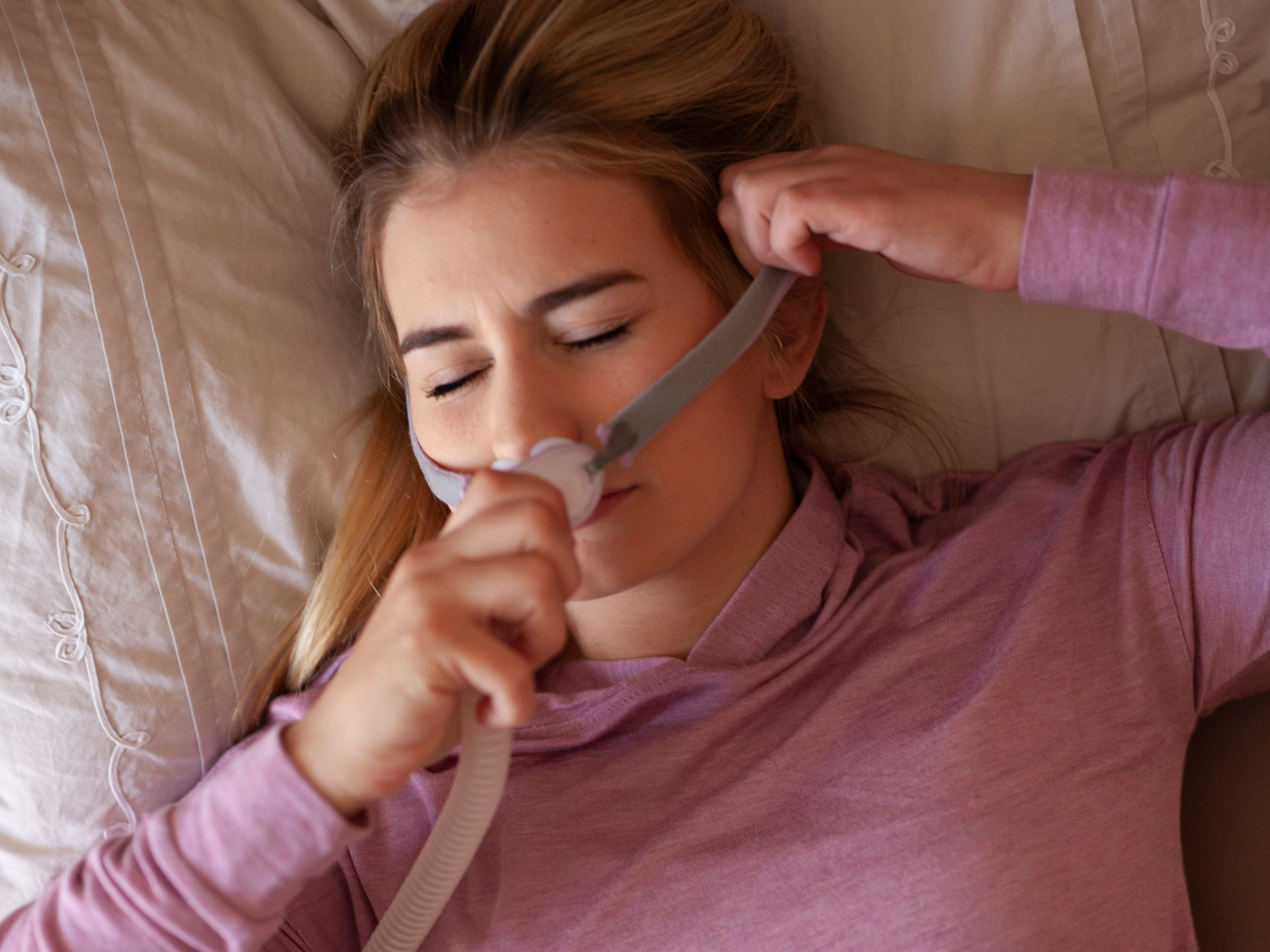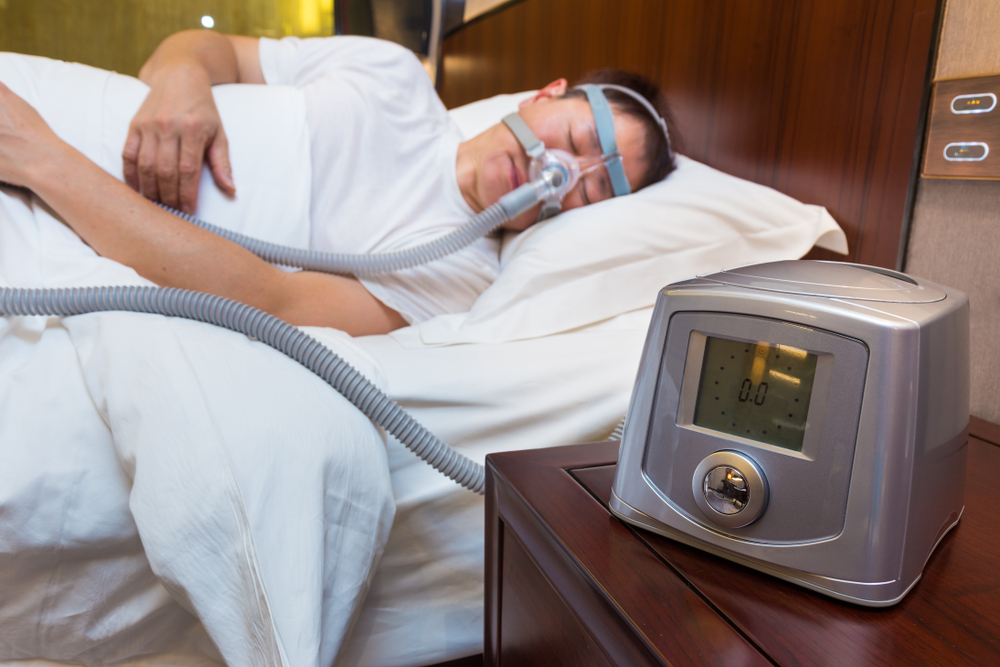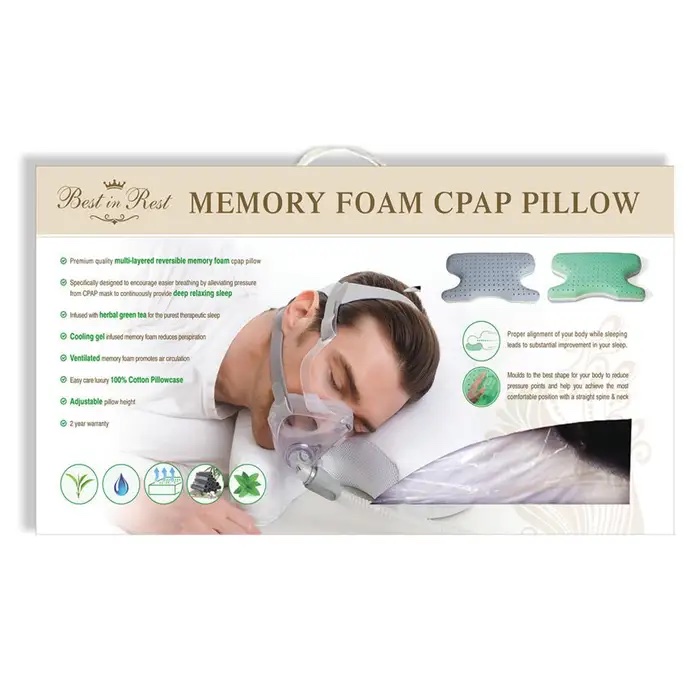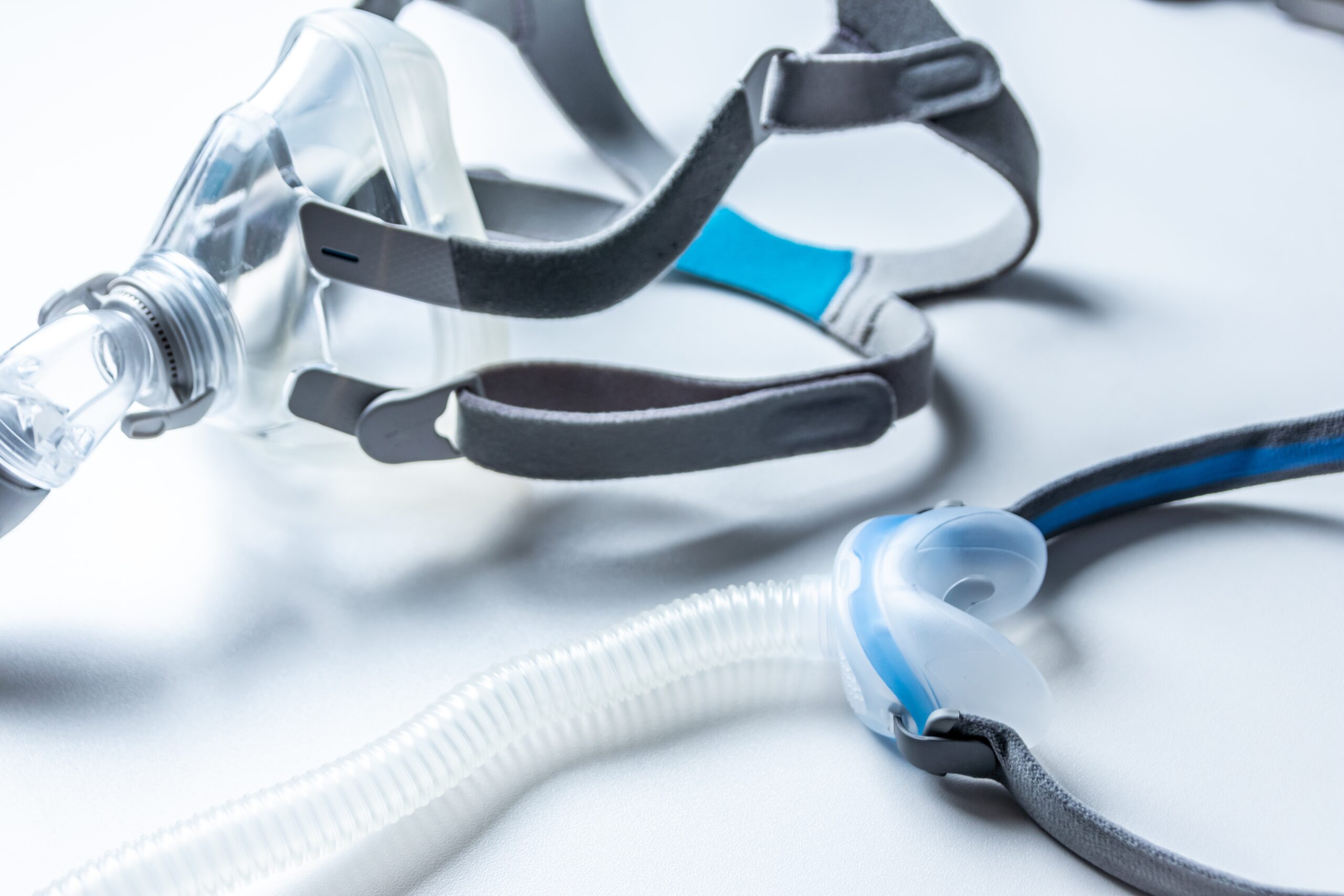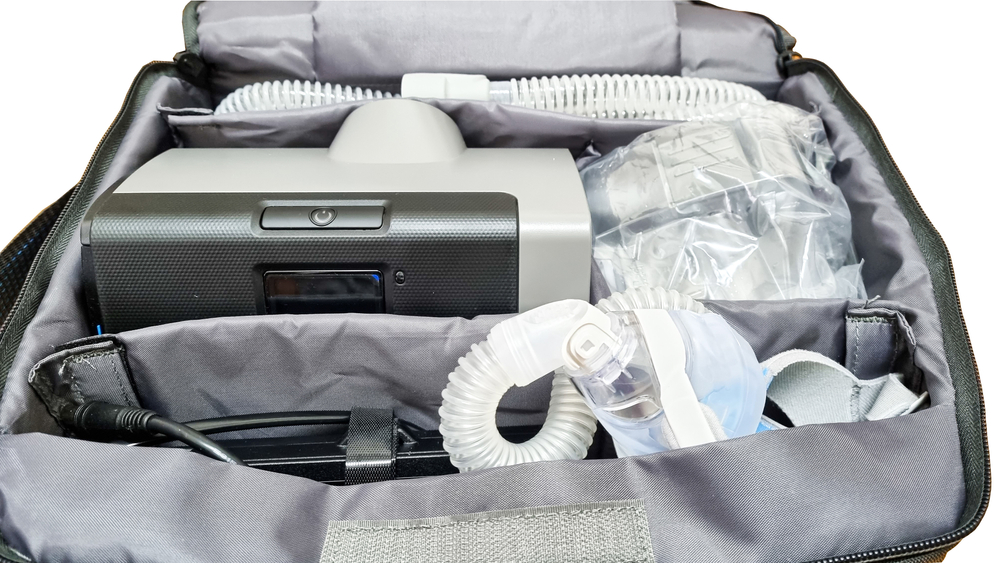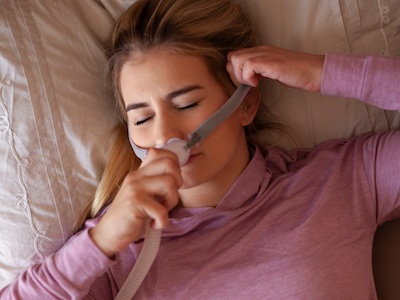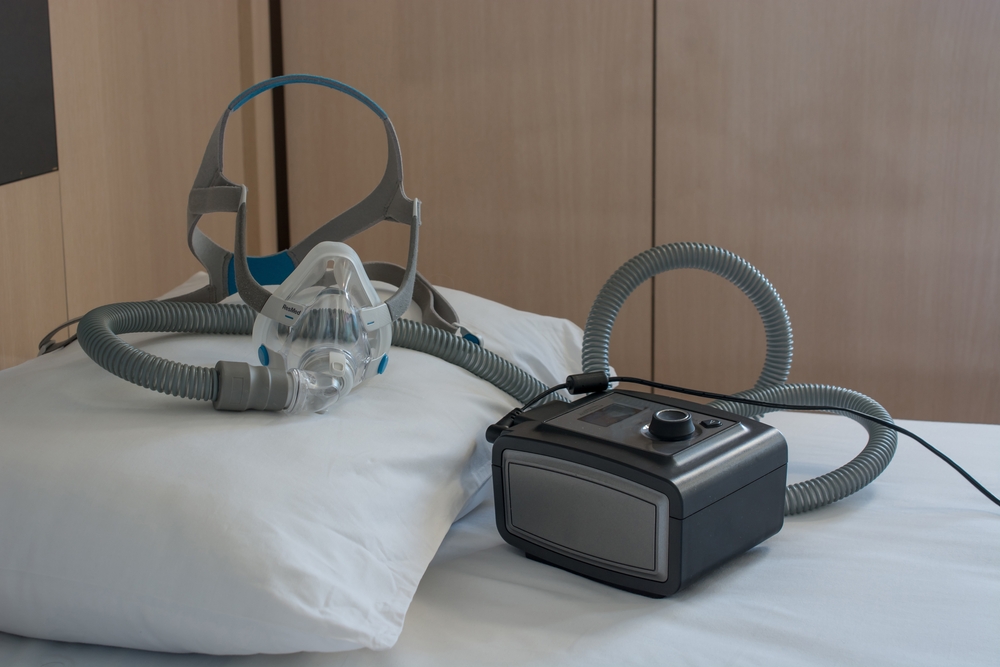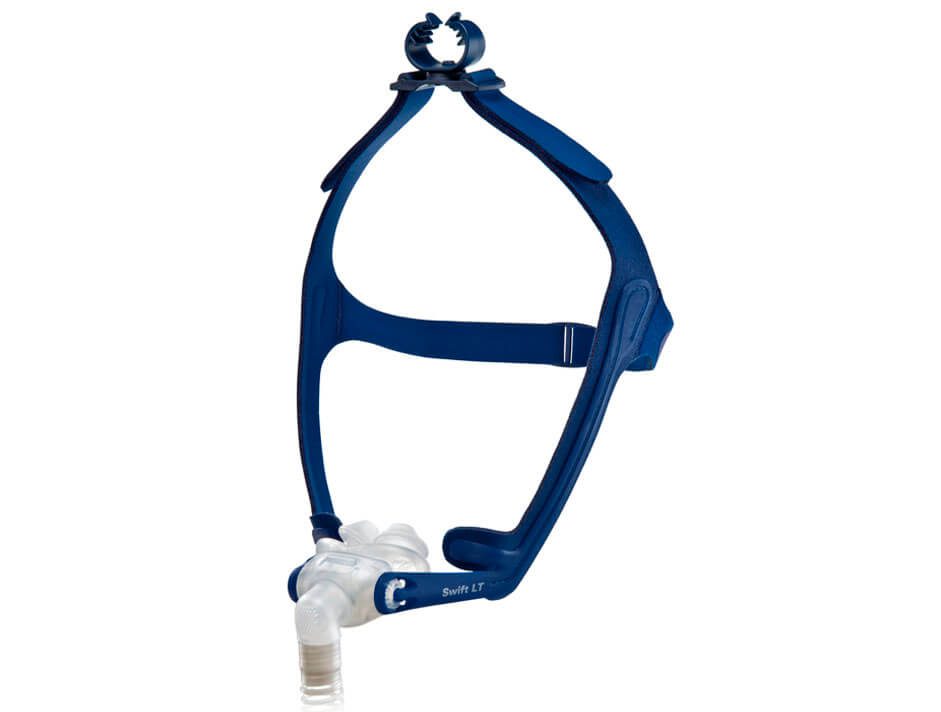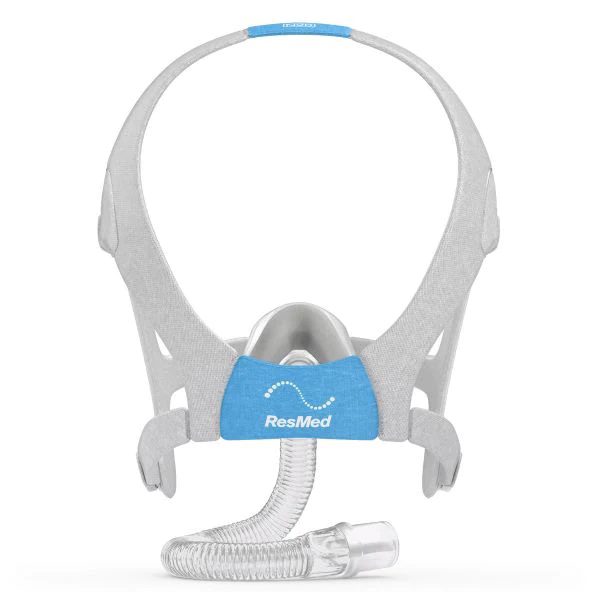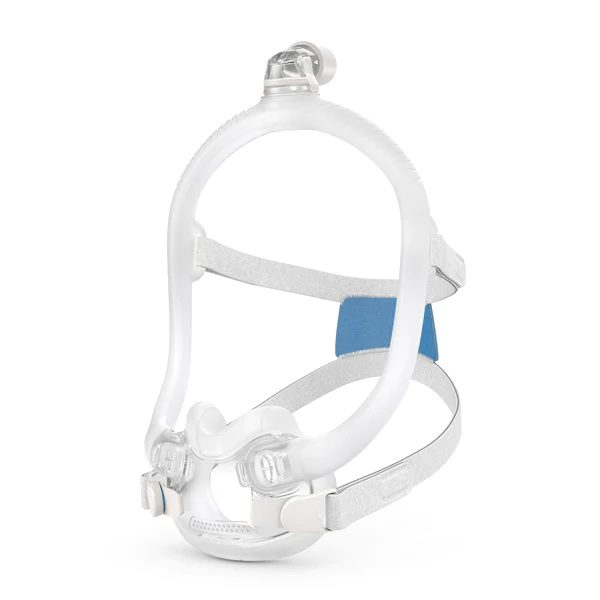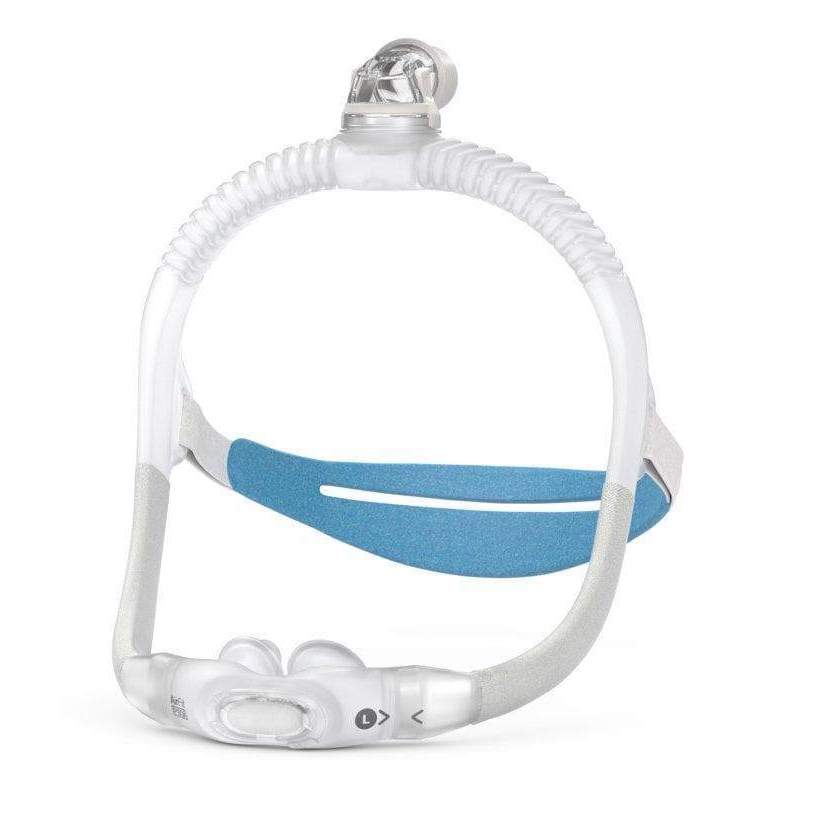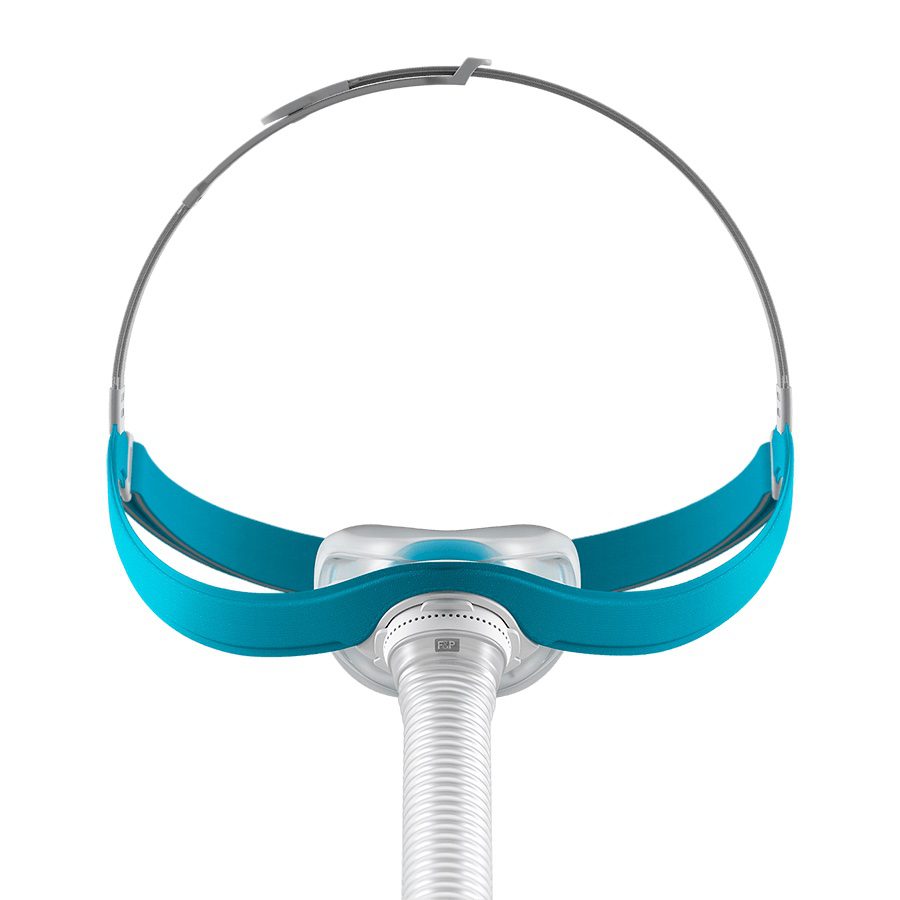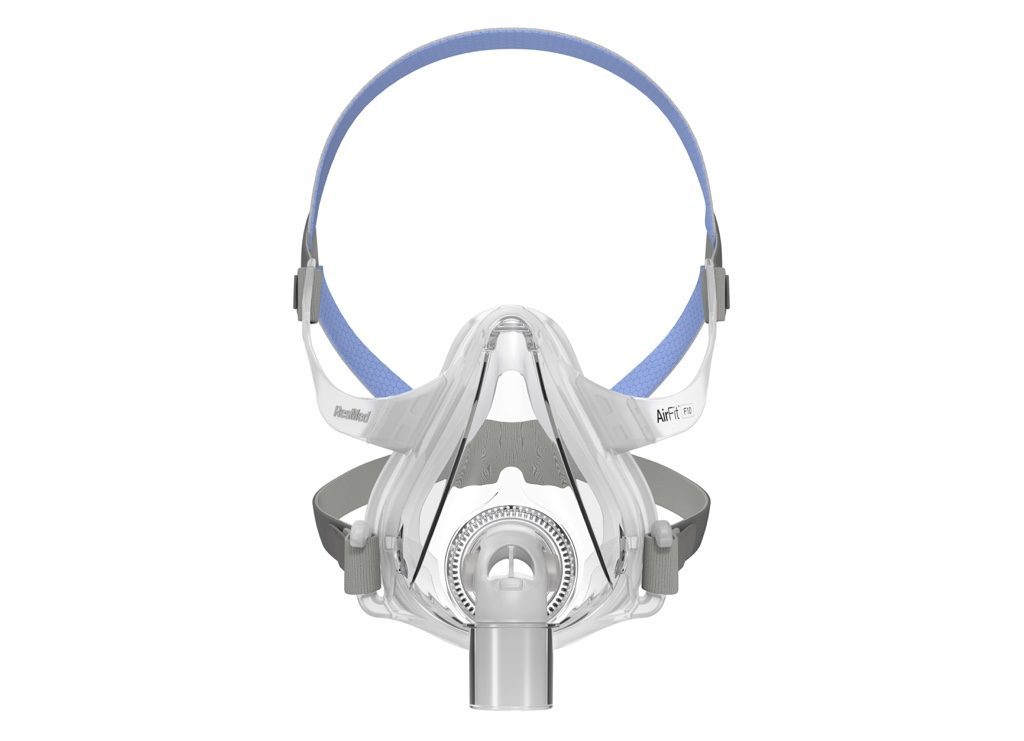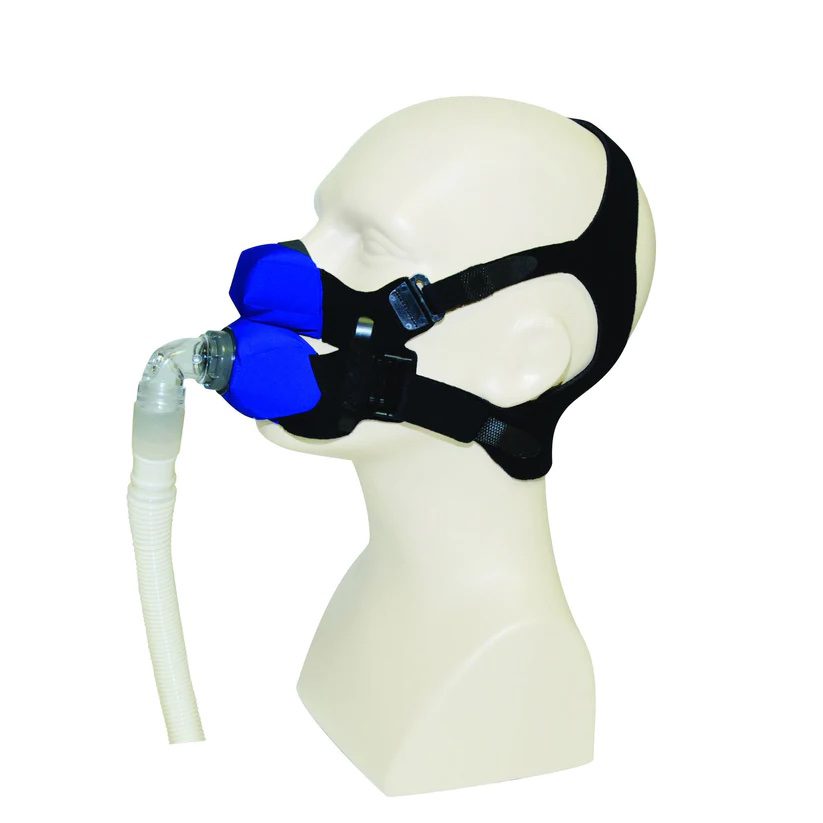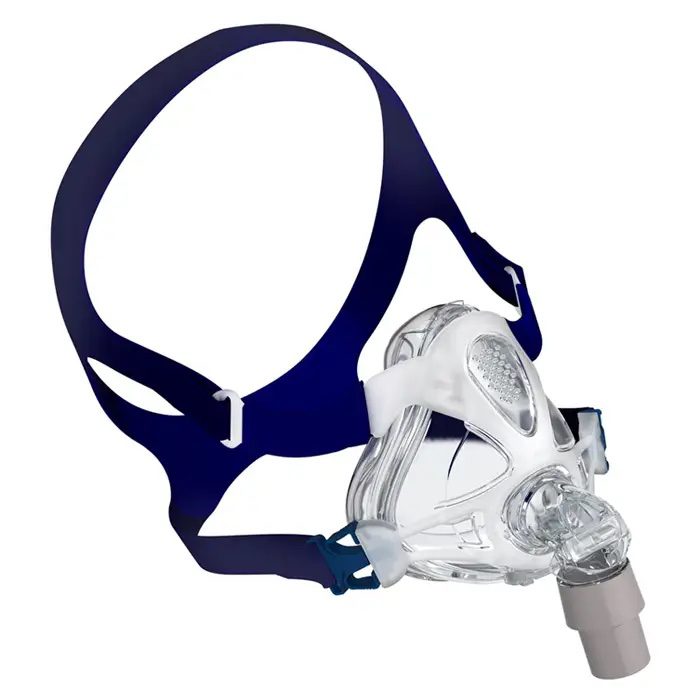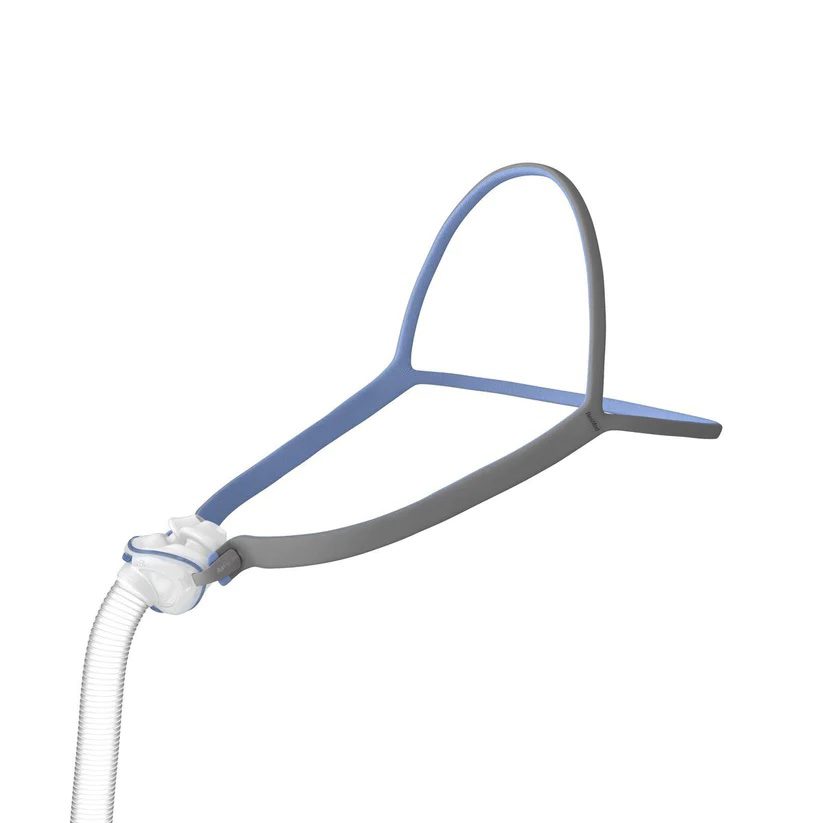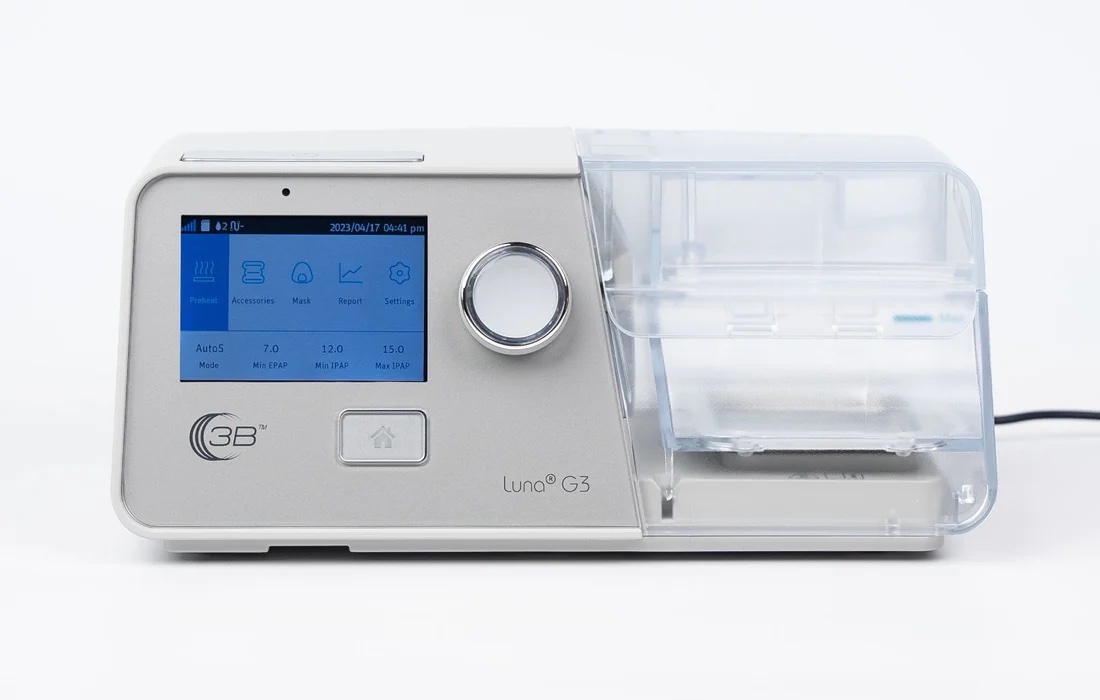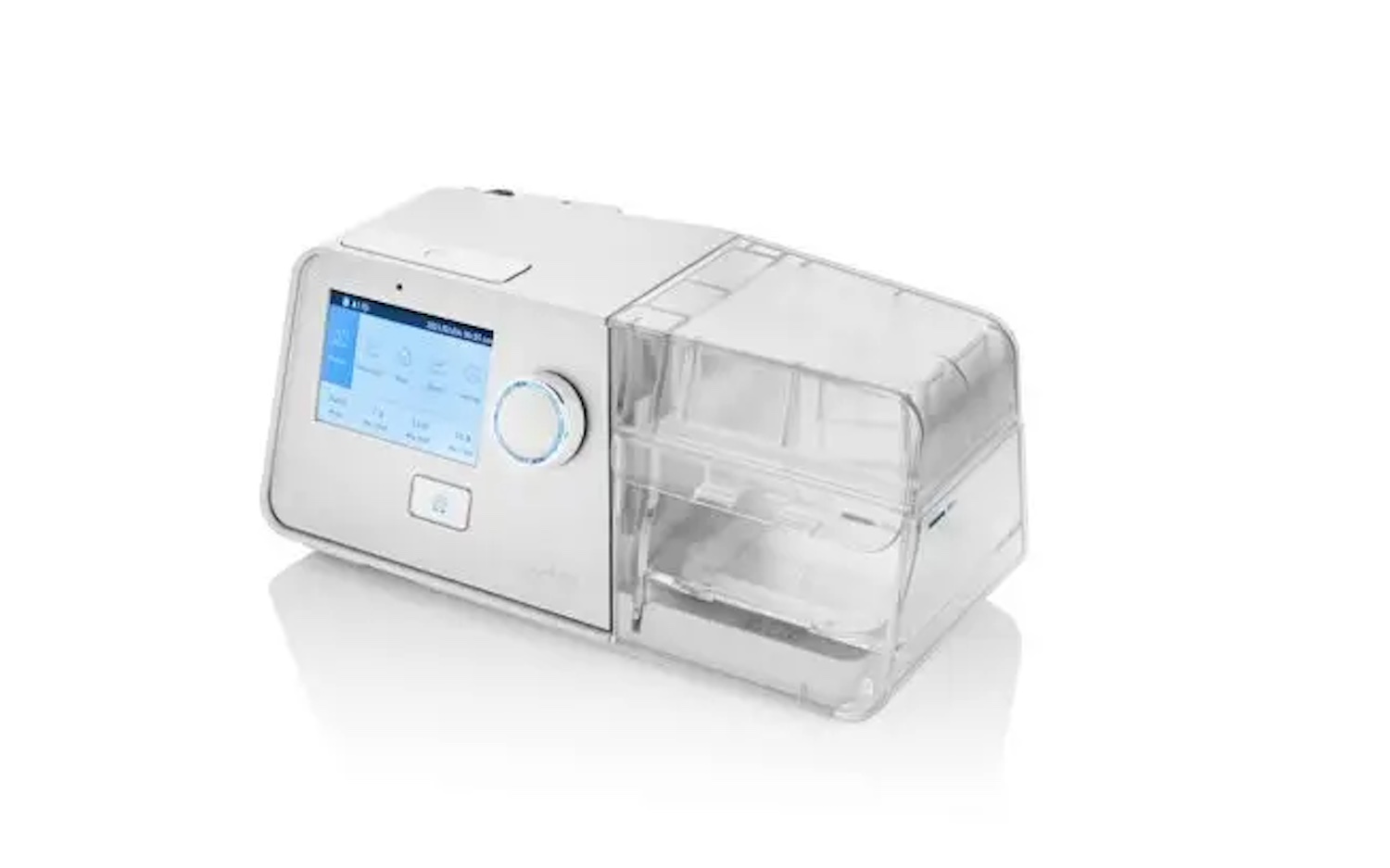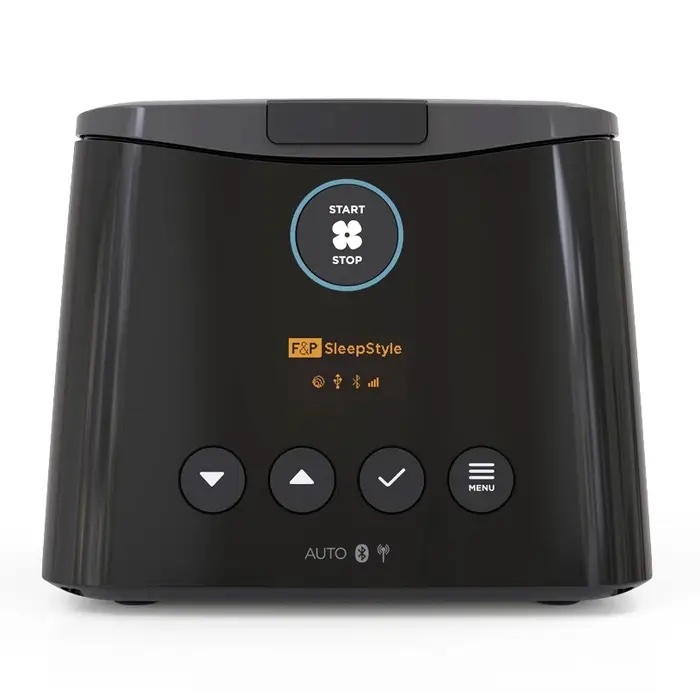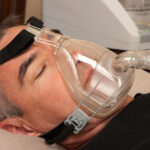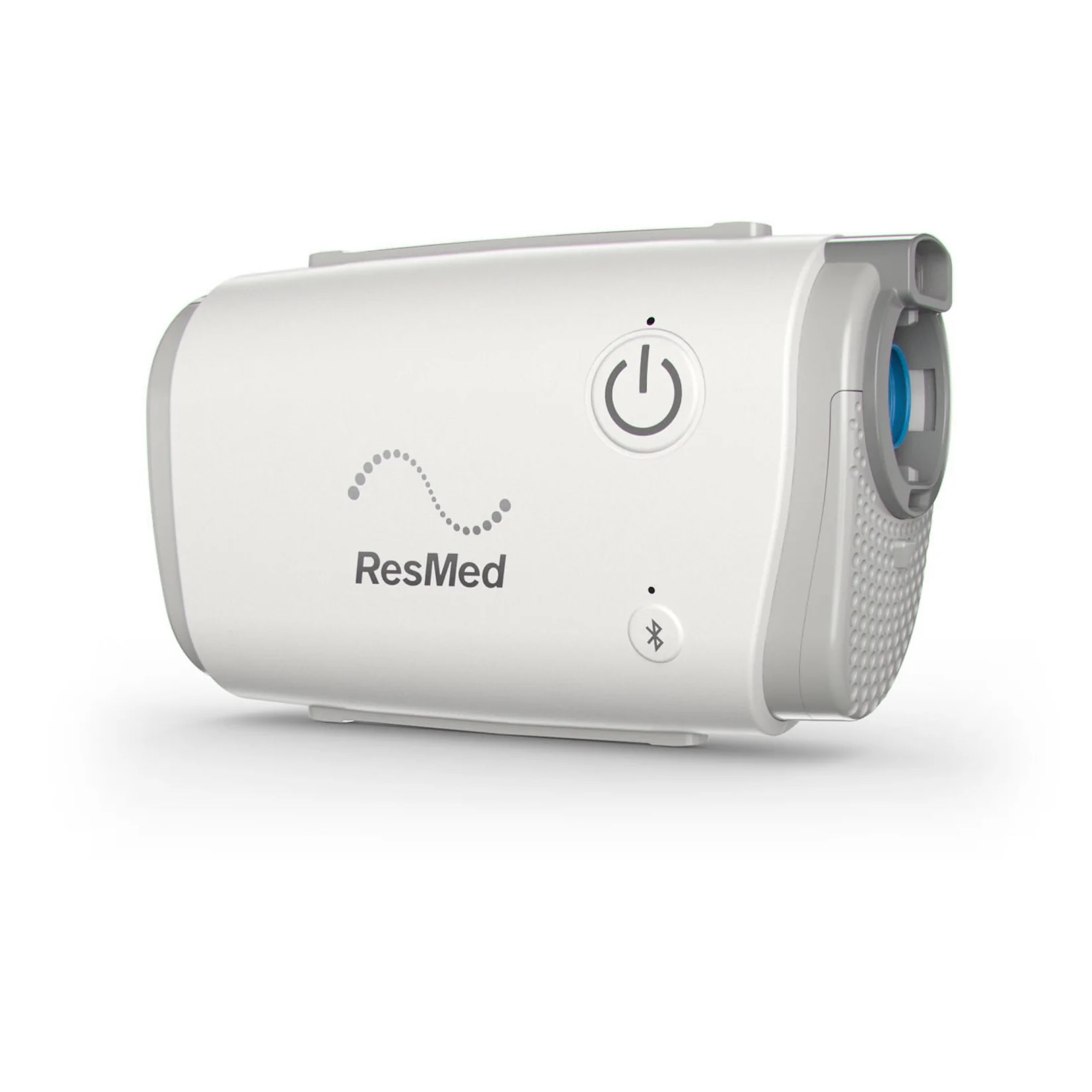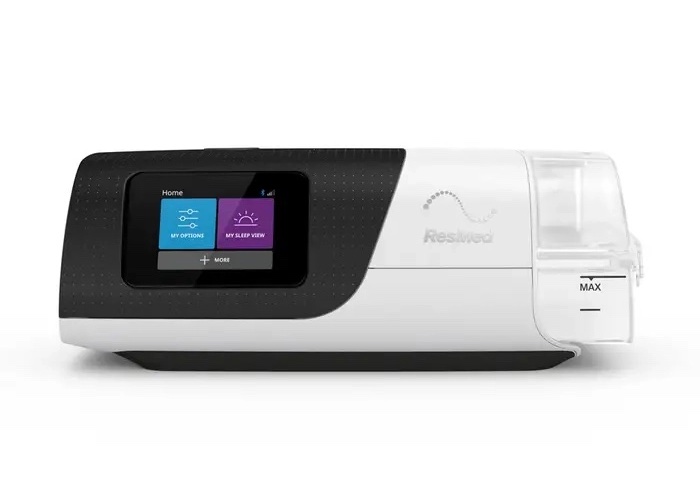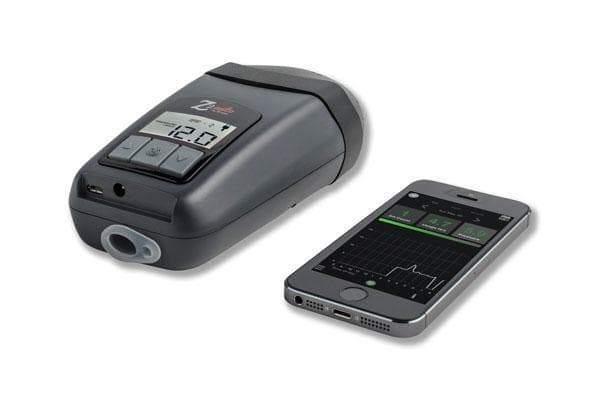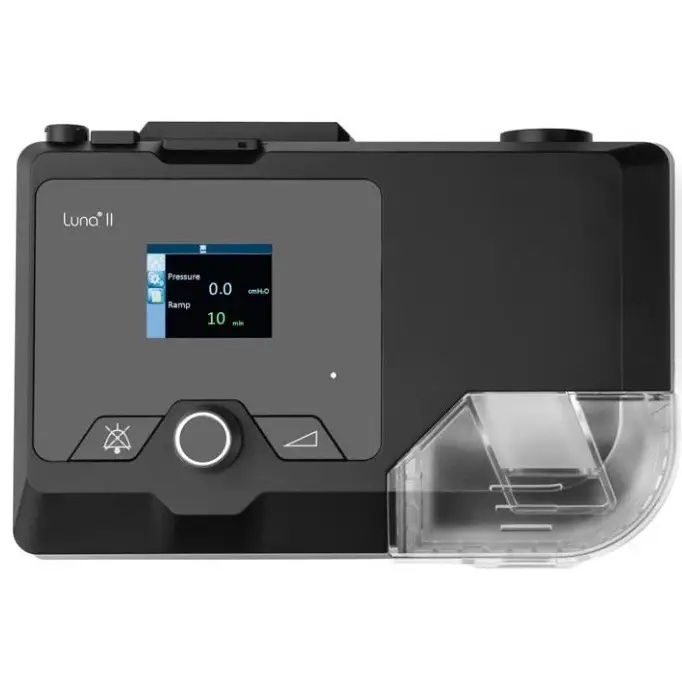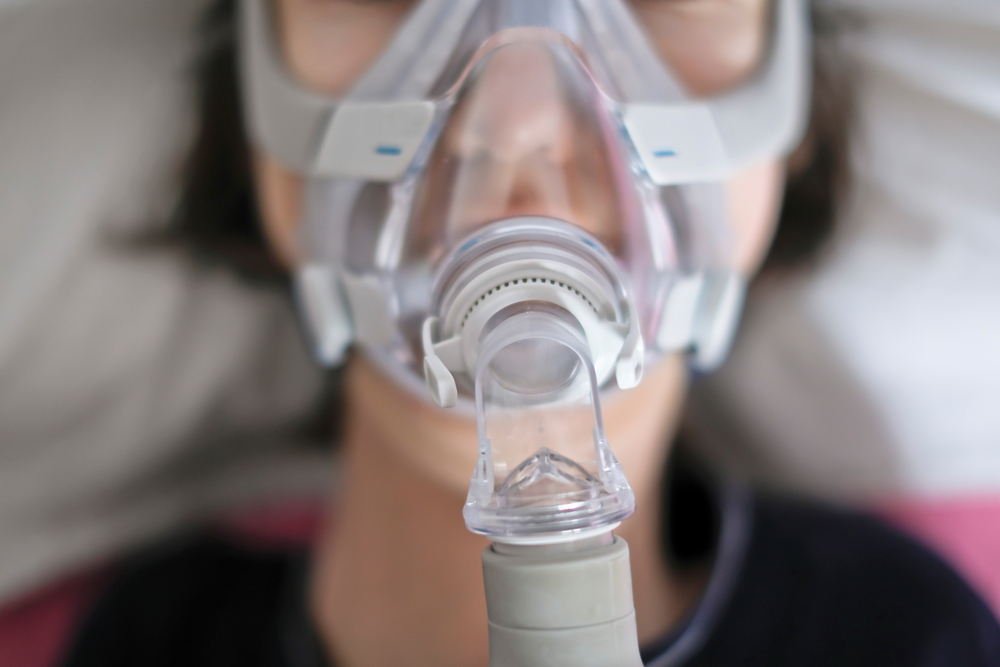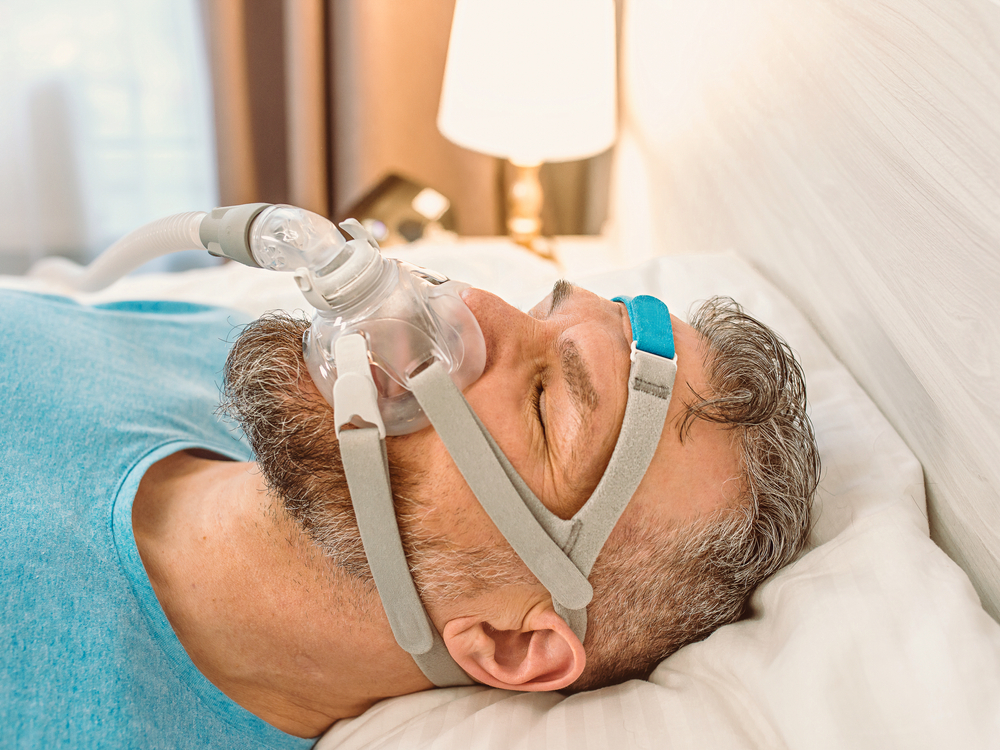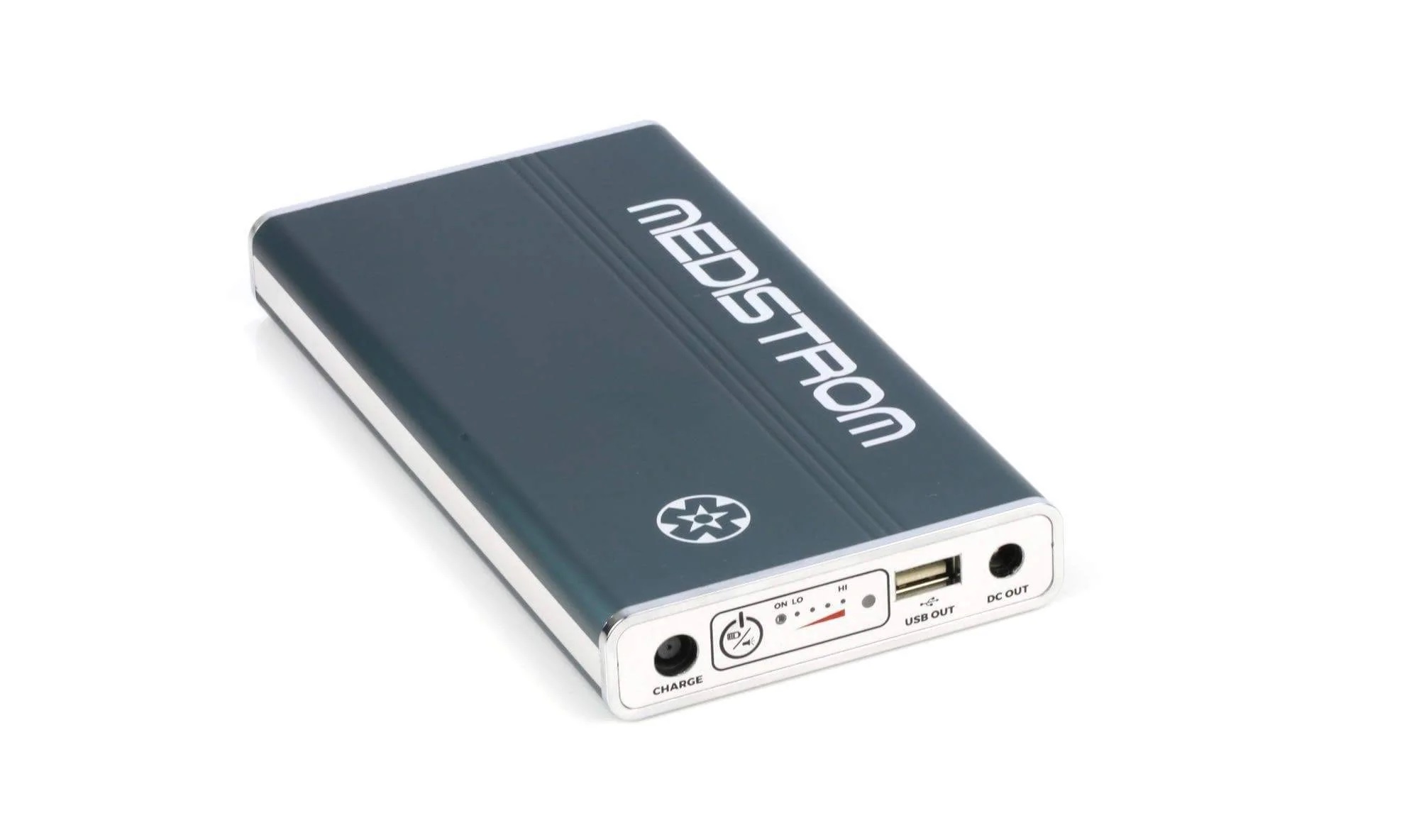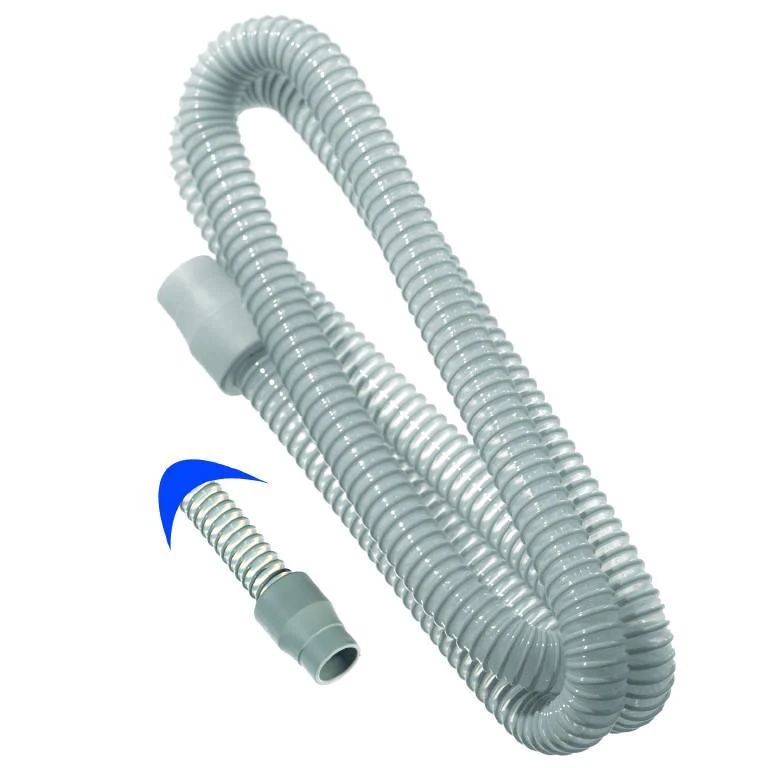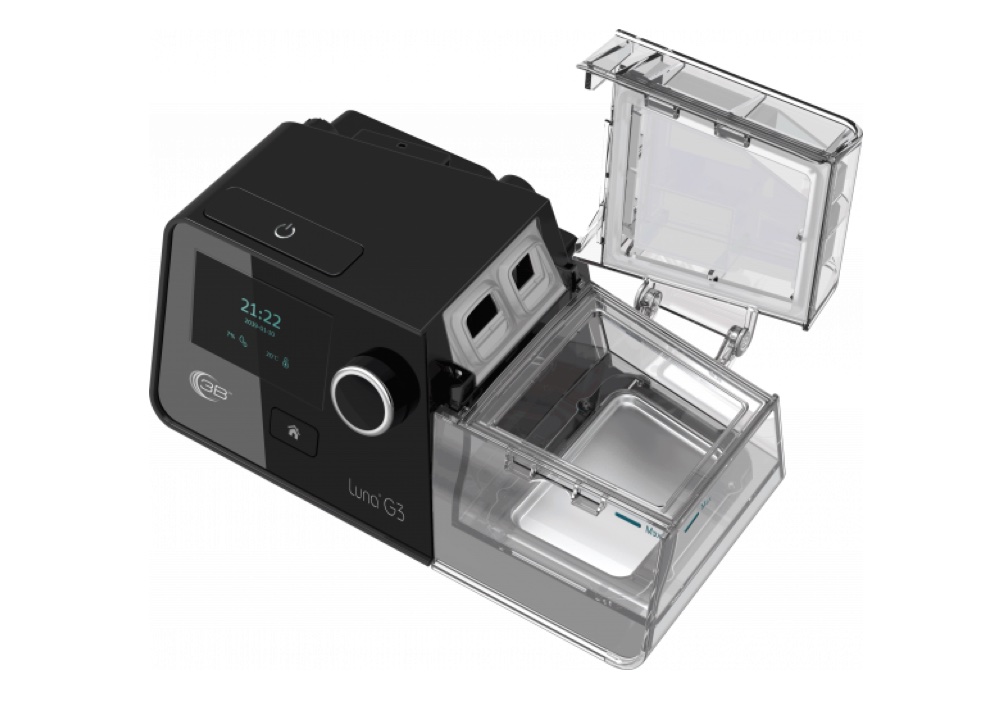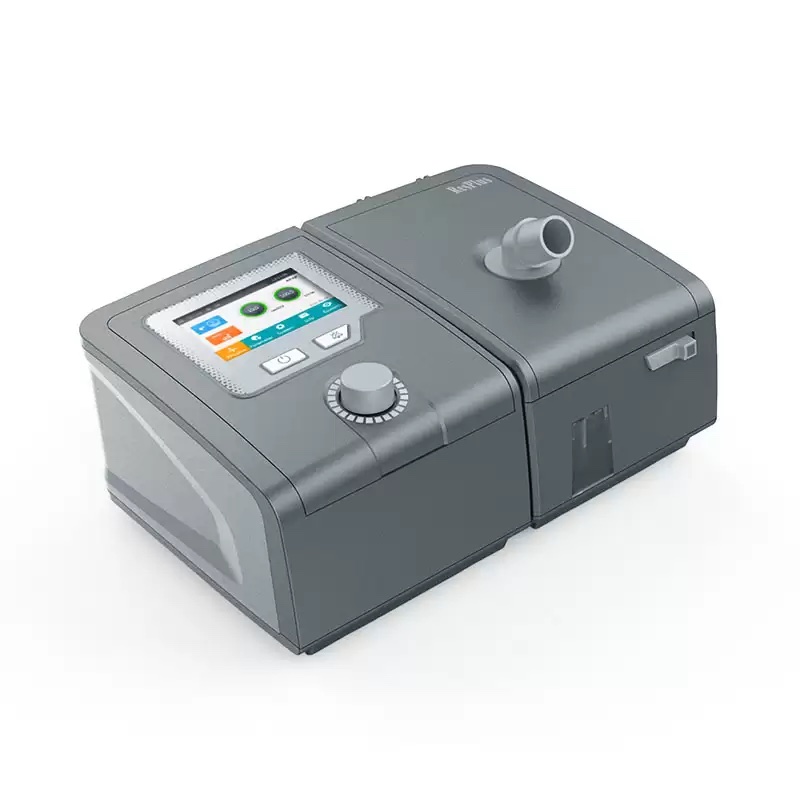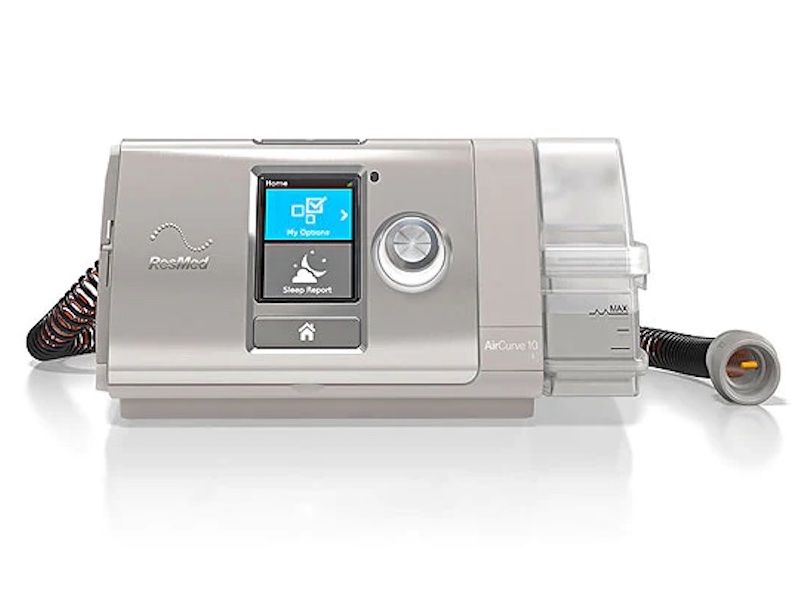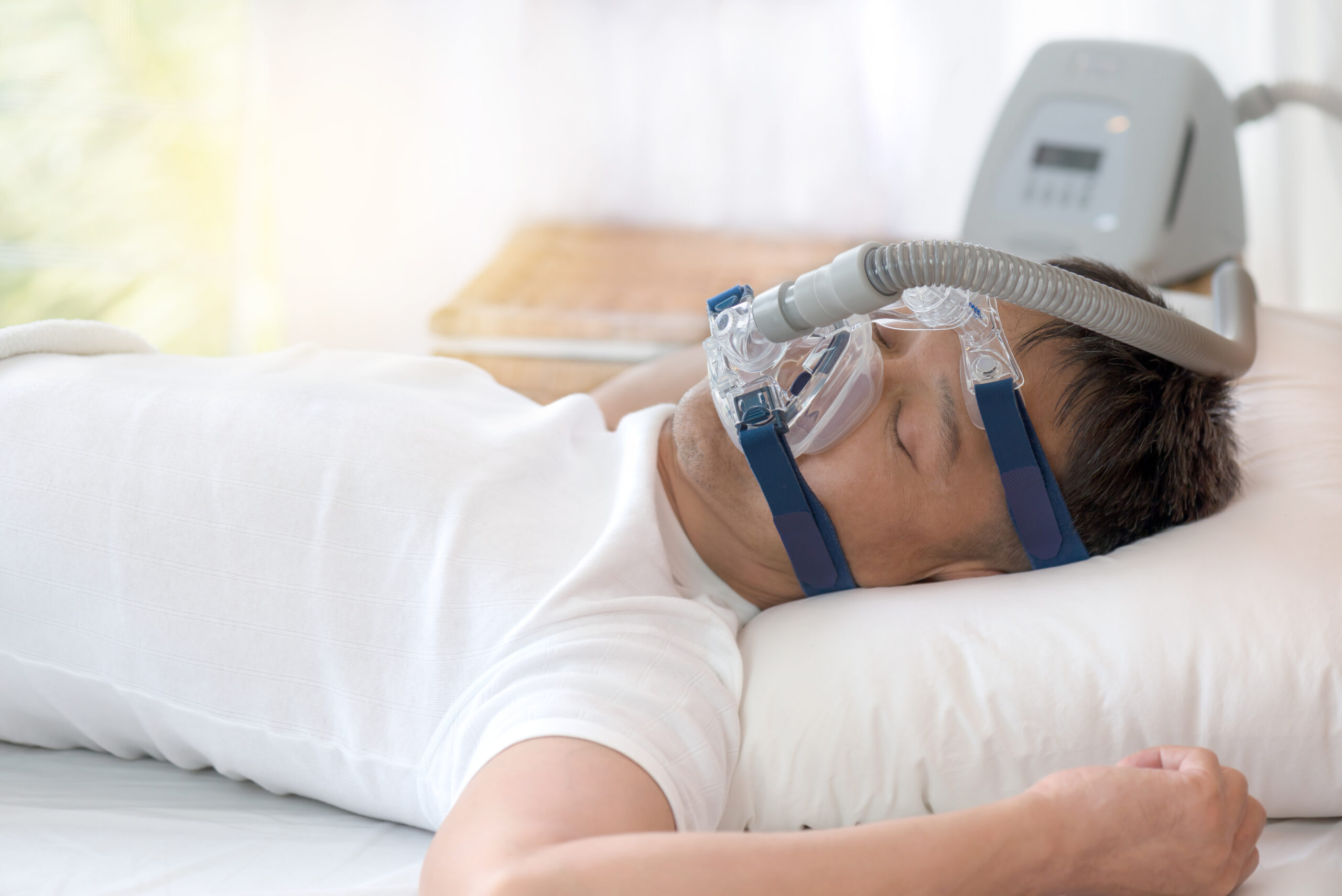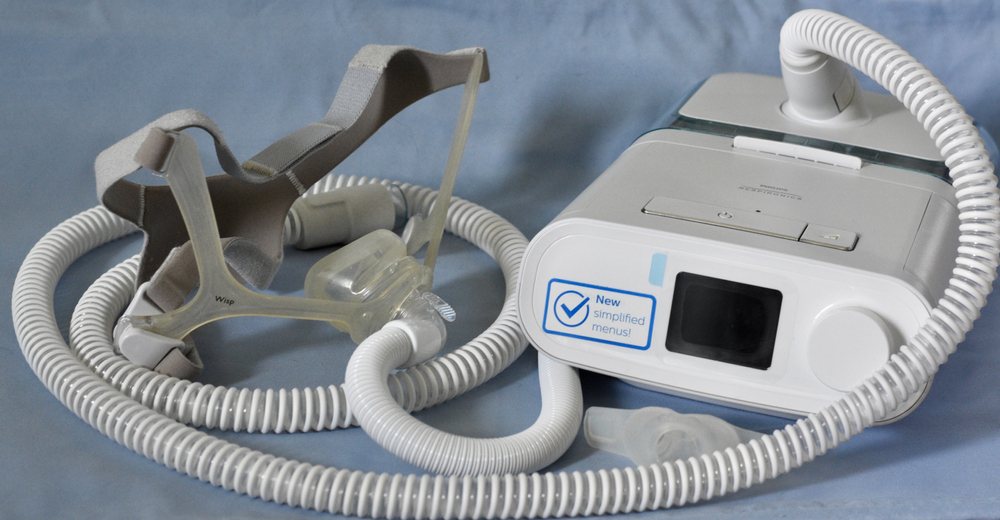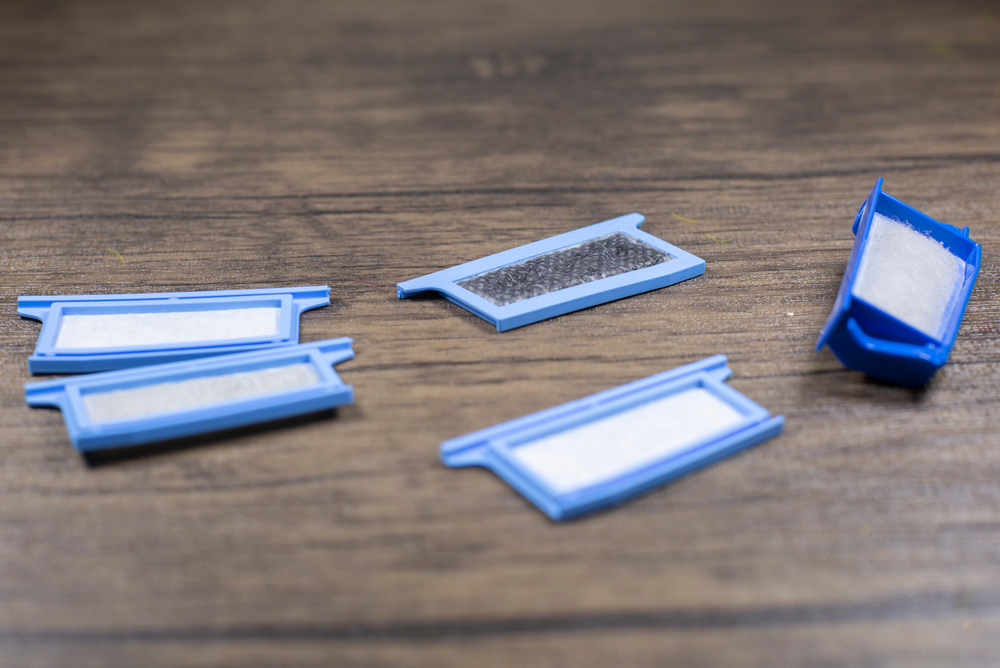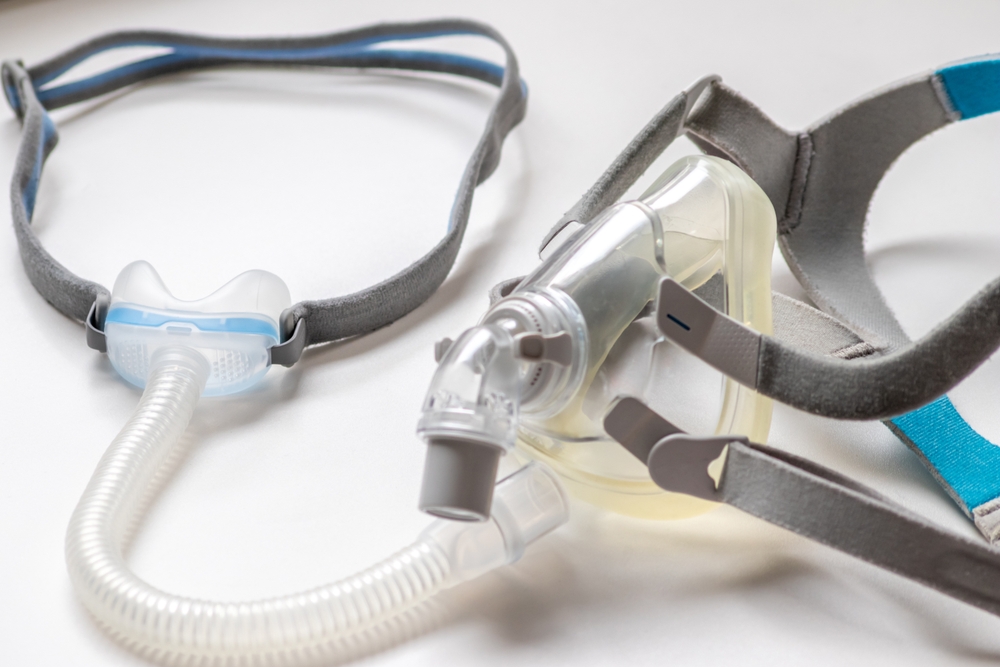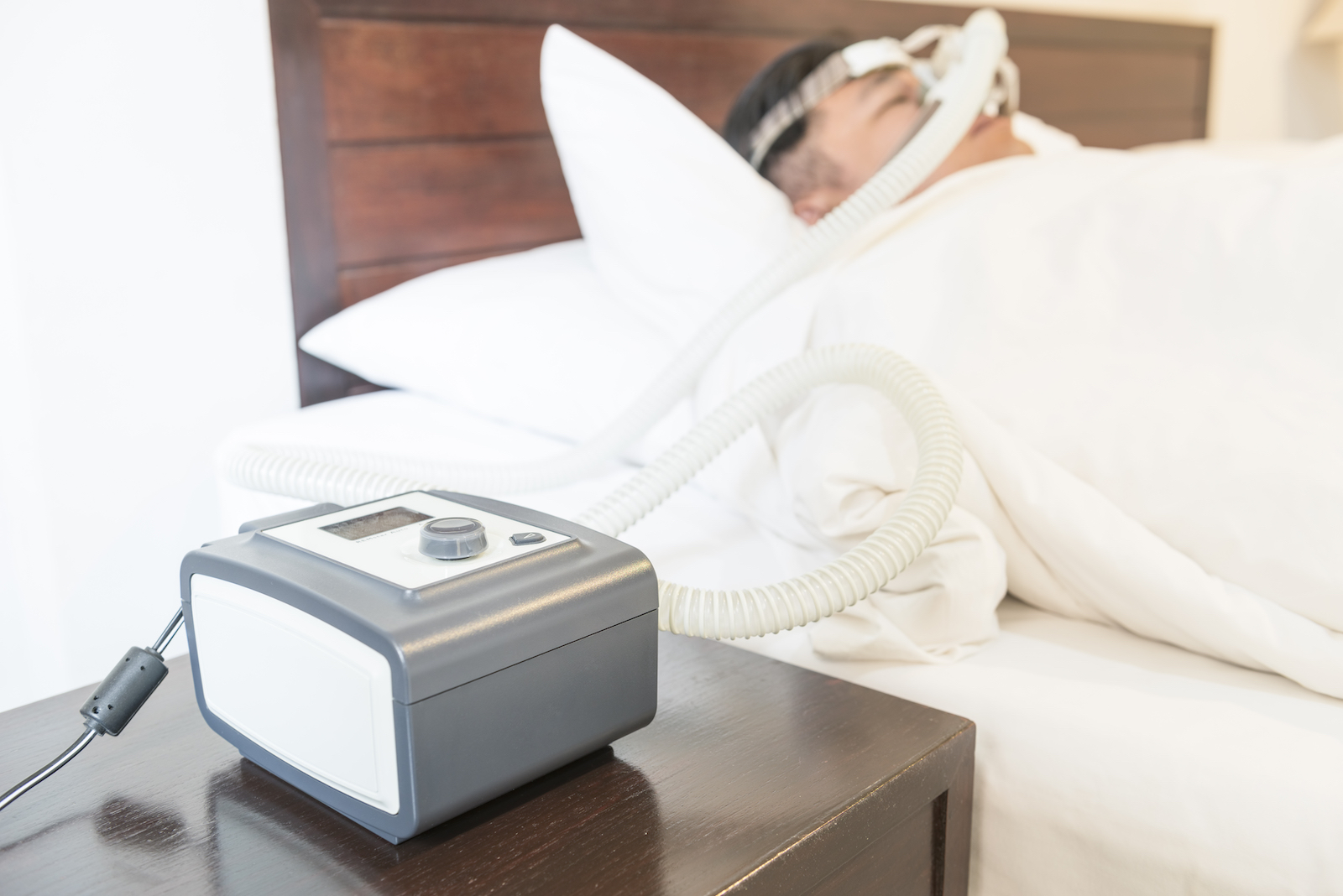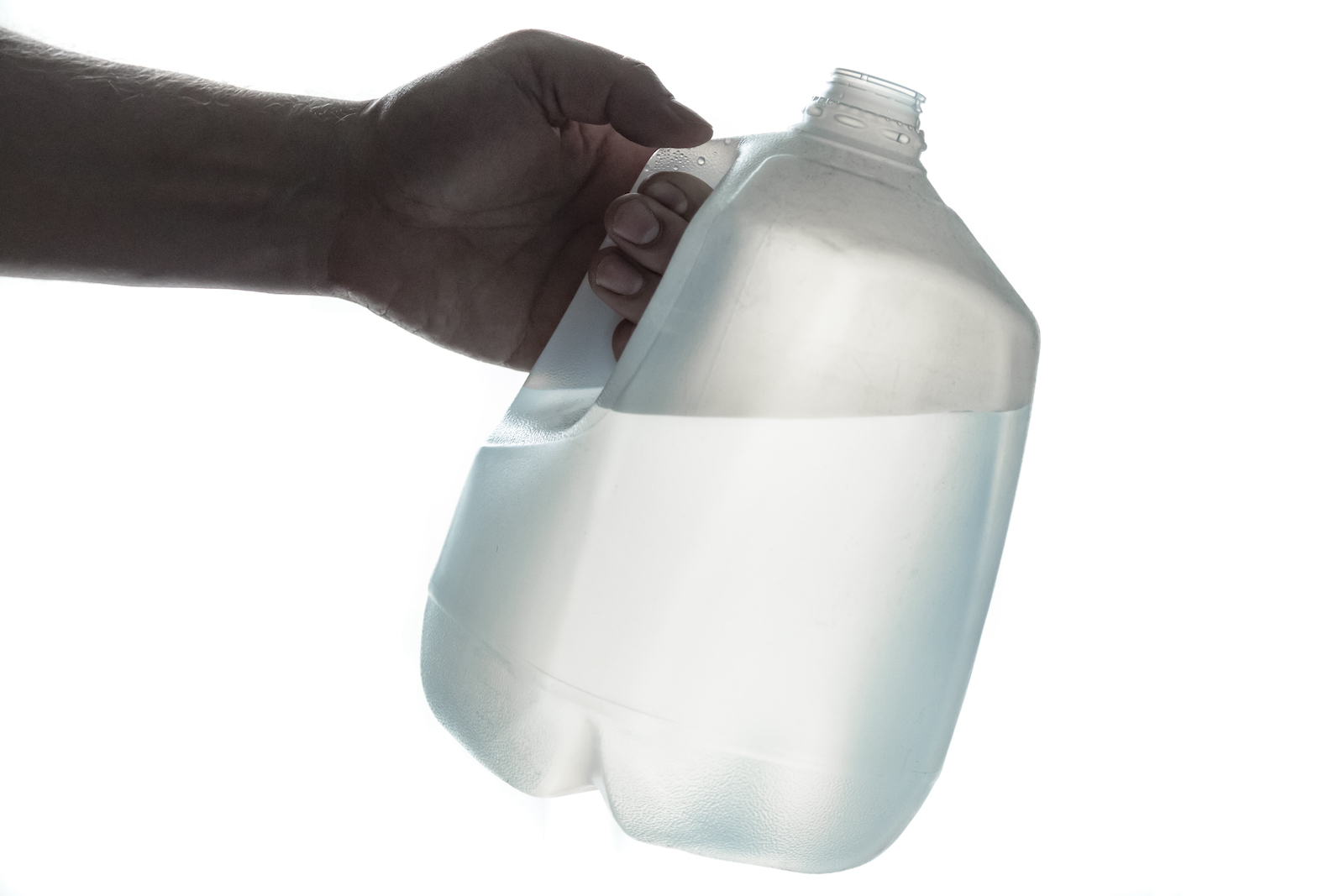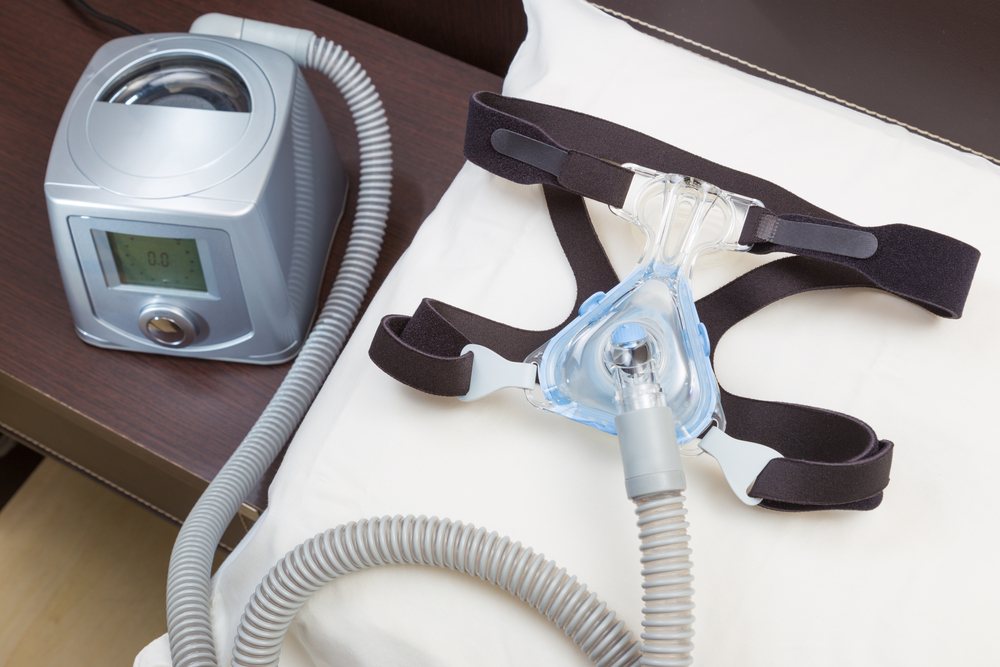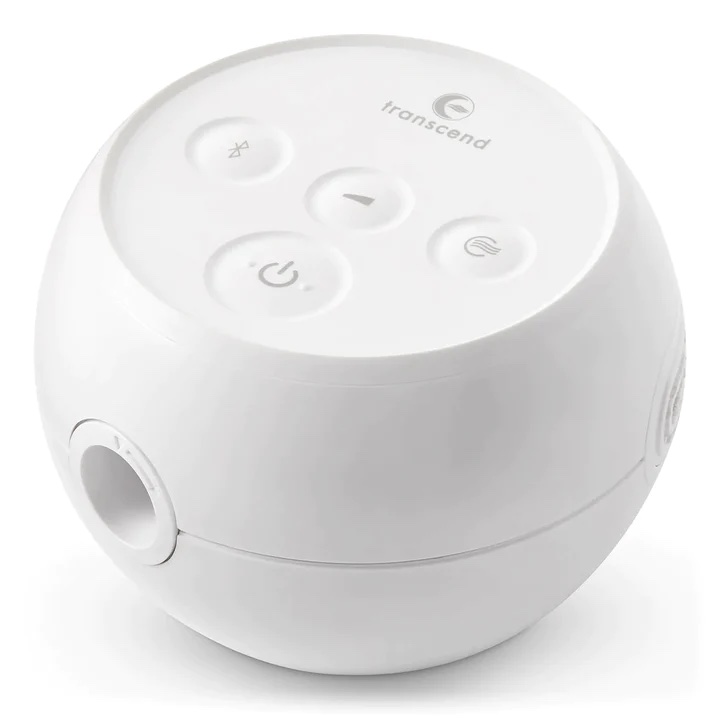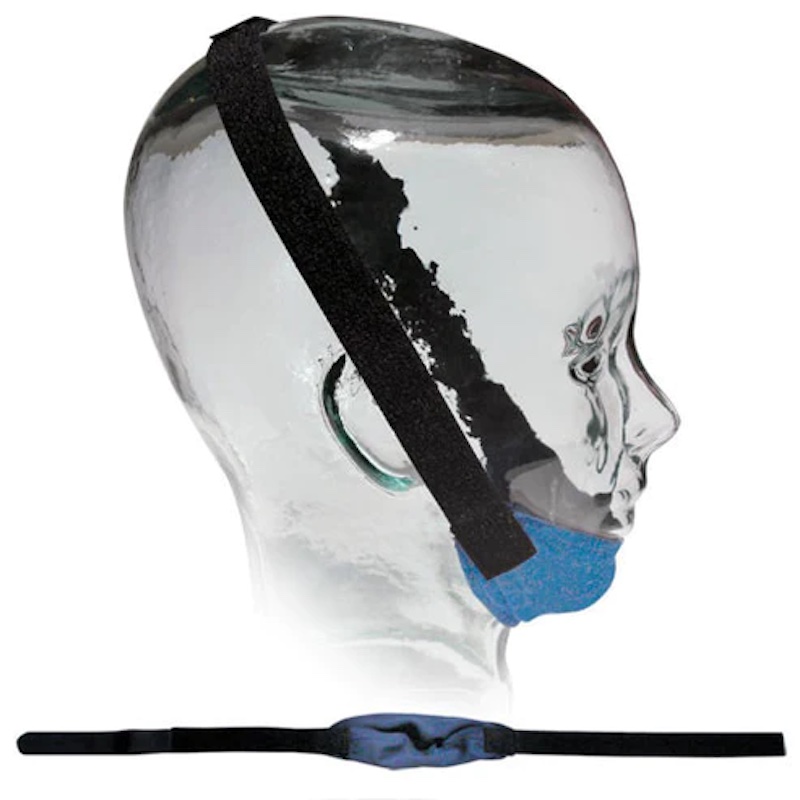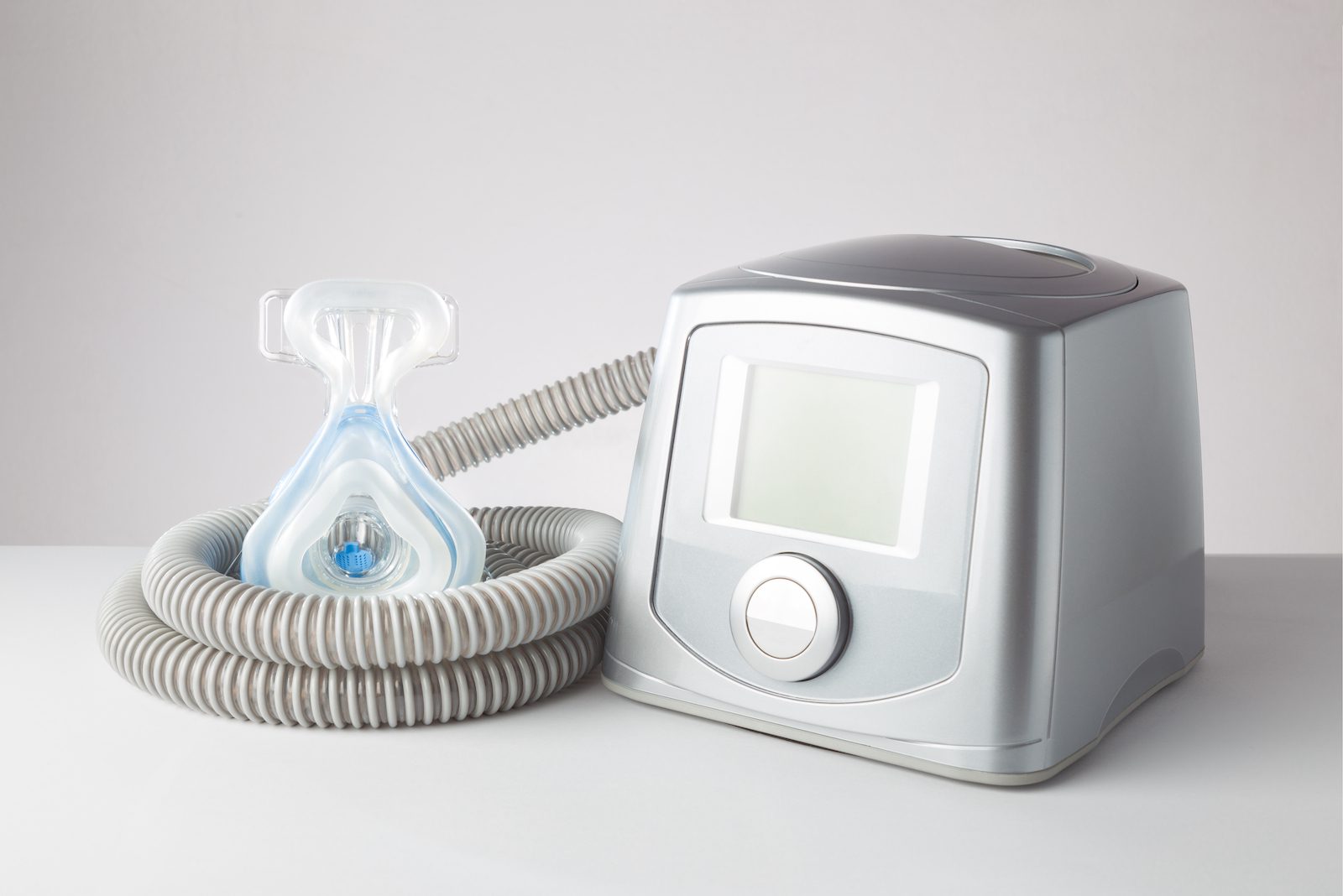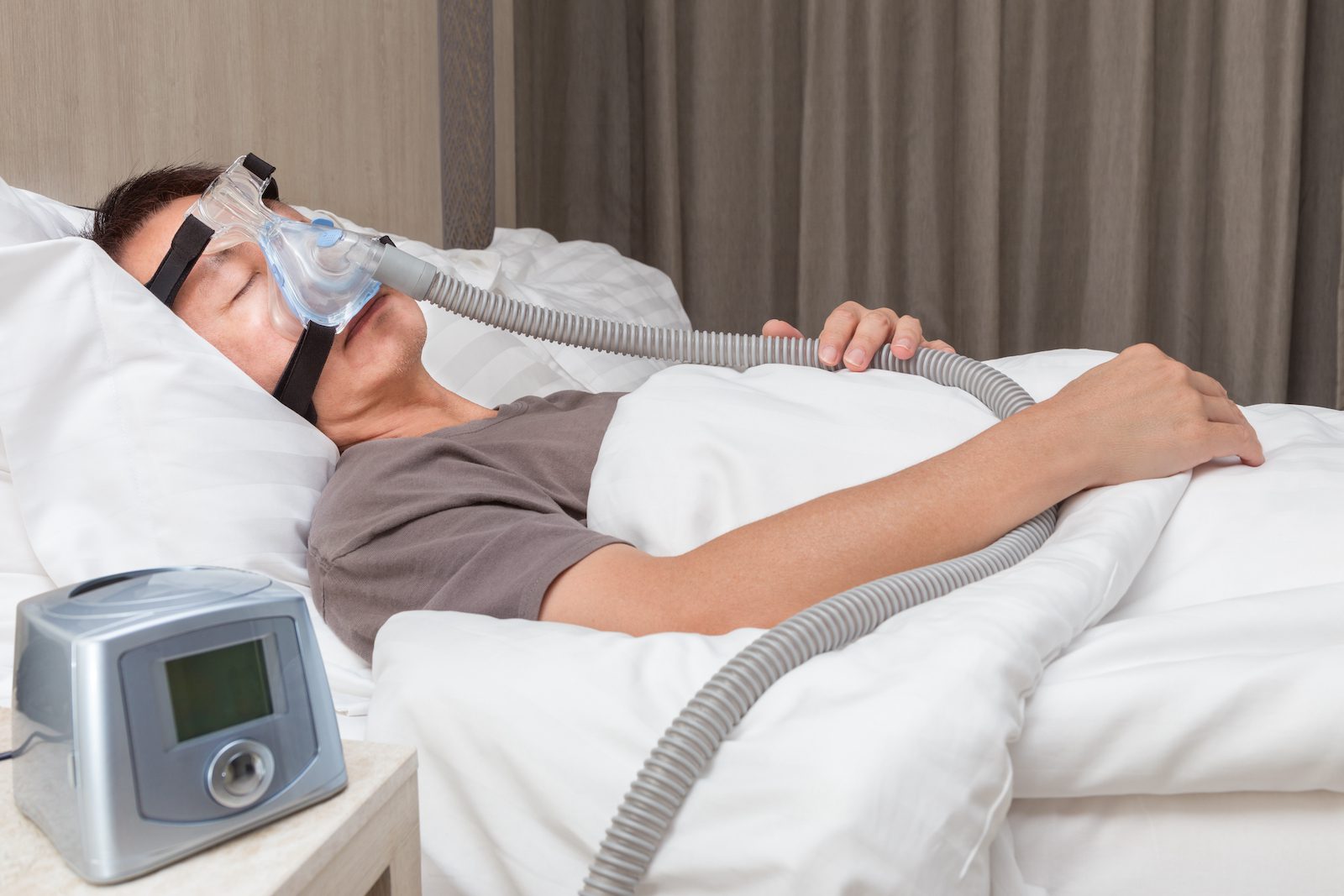Look & Feel
The DreamWisp has a low-profile design with only four contact points. It includes headgear that attaches below the ears with magnetic clips. The CPAP hose connection is at the top of the user’s head, allowing for a clear field of vision.
Ideal For
- Active sleepers worried about their CPAP hose pulling on their mask
- Stomach and side sleepers who dislike front-of-face tube connections
- People who experience skin irritation or claustrophobia with a standard nasal mask
Who Should Keep Looking
- People with metallic implants or an implanted medical device
- CPAP users who breathe through their mouth even when using a chinstrap
- Anyone who has a full mustache that may interfere with the mask’s seal
-
Price
$90
-
Size
Petite/Small/Medium/Large/Extra Large
The DreamWisp Nasal CPAP Mask by Philips Respironics has a unique “tip of the nose” design with a smaller footprint than a traditional nasal mask, as well as a hose connection at the top of the head that may be more comfortable for some sleepers.
Philips Respironics offers several types of nasal masks, including the Wisp and the DreamWear models. The DreamWisp combines features from each of those models and is designed to offer stability with minimal skin contact. We’ll walk you through the DreamWisp’s design and features, then closely examine how it performs in several important categories.
Note: Philips Respironics recalled the DreamWisp Nasal CPAP Mask and several other mask models in September 2022, warning that the magnets used to secure the headgear can potentially cause dangerous interactions with metallic implants or medical devices such as pacemakers. The company states that the DreamWisp may still be used by certain people, but it should not be used by or around people with metallic implants or implanted medical devices.
Use this SleepApnea.org link for the most current discount on Philips Respironics products
Shop NowOther Nasal Mask Models Made by Philips Respironics
- Wisp Nasal Mask: Like the DreamWisp, the Wisp is a nasal mask that fits over the tip of the user’s nose. However, the CPAP hose connects directly to the front of the Wisp’s mask rather than sharing the DreamWisp’s top-of-the-head connection style.
- Pico Nasal Mask: The Pico has a more traditional nasal mask design than the DreamWisp, with a slightly larger cushion that fits over the nose as well as a forehead strap for added stability. Like the Wisp, the Pico’s hose attachment is on the front of the mask.
- DreamWear Nasal Mask: The DreamWisp is a combination of the Wisp and DreamWear masks. The DreamWear model also places the hose connection at the top of the user’s head. However, its cushion sits below the nose rather than covering it.
What You Need to Know About the Philips Respironics DreamWisp Nasal CPAP Mask
The Philips Respironics DreamWisp is a nasal mask designed for use with a continuous positive airway pressure (CPAP) machine — or other types of positive airway pressure (PAP) devices — that treats sleep apnea by directing pressurized air through the user’s nose.
Nasal, nasal pillow, and full-face masks are the most common types of CPAP masks. Nasal pillow masks have the lowest profile, followed by nasal and full-face masks.
The DreamWisp has a smaller footprint than most nasal masks and covers the user’s nose without extending further onto their face. It features a hollow frame that acts as additional tubing, allowing the CPAP hose to connect at the top of the head rather than the front of the mask itself.
What Comes With It
The DreamWisp Nasal CPAP Mask comes with everything you need to use it with your CPAP machine, including the mask frame, headgear, elbow connection, and a mask cushion. The DreamWisp does not come with a CPAP hose or other CPAP accessories.
The DreamWisp’s price-point is comparable to many nasal CPAP masks, including other Philips Respironics models.
Mask Type: Nasal
Price: $75
Components:
- Headgear
- Mask frame
- Sizing connector
- Mask cushion
- Elbow connector
- Tubing quick release
Features You Might Like
- Distinctive features of the DreamWisp Nasal CPAP Mask include its top-of-the-head hose connection and its cushion, which fits directly over the nose and has a smaller footprint than a traditional nasal cushion.
- Low-profile design: Unlike a standard nasal mask, which forms a triangular shape and sits just above the mouth up to the bridge of the nose, the DreamWisp’s cushion is designed to cover the user’s nose without extending farther than necessary below the nostrils. Additionally, the DreamWisp’s frame and headgear have a minimalist design that may help reduce skin irritation and red marks.
- CPAP hose connection location: Most nasal CPAP masks attach the hose directly in front of the nose, but the DreamWisp places the connection on top of the head. Instead of flowing directly into the mask, the pressurized air is sent through the hollow mask frame. This design choice allows for greater freedom of movement and a clear field of vision.
- Magnetic clips: The DreamWisp uses magnets that secure the mask’s frame and headgear while allowing for easy adjustment. However, this feature was the reason for the DreamWisp’s 2022 recall due to the magnets’ ability to interact with metallic implants and medical devices.
Mask Sizes
The DreamWisp has a standard-sized frame that can be adjusted using the included sizing connector and tabs on the headgear. The instruction manual includes detailed instructions on adjusting the mask’s fit, including advice on whether the user may need a different sizing connector.
DreamWisp mask cushions come in five sizes to fit a variety of facial structures. Replacement cushions can be purchased separately.
How This CPAP Mask Performs
The DreamWisp is exceptionally easy to use thanks to its system of magnetic attachments and adjustable tabs. People with dexterity concerns will likely have no trouble using this mask, although some may need help adjusting the frame and headgear.
Like most CPAP masks, the DreamWisp is compatible with almost all PAP machines. A notable exception is the ResMed AirMini CPAP Machine, a travel-friendly device that has specific mask and tubing requirements. The DreamWisp is also compatible with standard-cuff CPAP hoses and can be used with various accessories such as CPAP humidifiers.
While the DreamWisp is compatible with all heated hoses that have a standard 22-millimeter cuff connector, the heated hose you choose must be compatible with your CPAP machine in order to work correctly.
Air pressure for PAP devices is expressed in centimeters of water pressure (cm H2O). The DreamWisp can accommodate pressure from 4 to 30 cm H2O, which encompasses the full range of PAP therapy settings.
Philips Respironics suggests that owners clean all non-fabric mask components daily, while all fabric components should be washed weekly. To clean the mask, disassemble the components and wash each with warm water and mild liquid soap before rinsing thoroughly and leaving to dry.
Its hollow frame makes the DreamWisp slightly more lightweight and flexible than many other masks. It will likely fit comfortably into most carry-on bags without adding too much bulk or weight.
Use this SleepApnea.org link for the most current discount on Philips Respironics products
Shop NowWhat Do Customers Have to Say About the DreamWisp CPAP Mask?
The Philips Respironics DreamWisp CPAP Mask is popular, with some reviewers commenting that it is the most comfortable mask they’ve tried. This is true even for some people who report disliking other nasal masks, as the lower profile of the cushion may reduce feelings of claustrophobia.
However, not all reviewers were happy with their DreamWisp mask. Some found that the mask was too loud since pressurized air flows through the hollow mask frame near the ears. Others reported feeling hot and constricted while wearing it.
Trial, Warranty, and Shipping Policies
| Availability | Like CPAP machines, CPAP masks like the DreamWisp can only be purchased with a prescription and are therefore only available through sleep specialists and CPAP retailers. Philips Respironics does not sell the DreamWisp directly to customers. |
| Shipping | Many online CPAP retailers offer free shipping for orders that reach a specific dollar amount. However, shipping costs and transit times vary depending on the retailer, your location, and your chosen shipping option. |
| Sleep Trial | Philips Respironics does not offer a trial for the DreamWisp Nasal CPAP Mask. It is worth reading your chosen retailer’s return policy before purchasing your new mask. |
| Warranty | The DreamWisp comes with a 90-day limited warranty from Philips Respironics that covers defects in workmanship and materials. If your mask fails while under warranty, the company will decide whether to repair or replace it. |
Medical Disclaimer: This content is for informational purposes and does not constitute medical advice. Please consult a health care provider prior to starting a new treatment or making changes to your treatment plan.
Still have questions?
Sleep apnea products can be confusing. If you need individualized assistance, send us an email at [email protected] with your questions and we'll help find the best fit for you.


